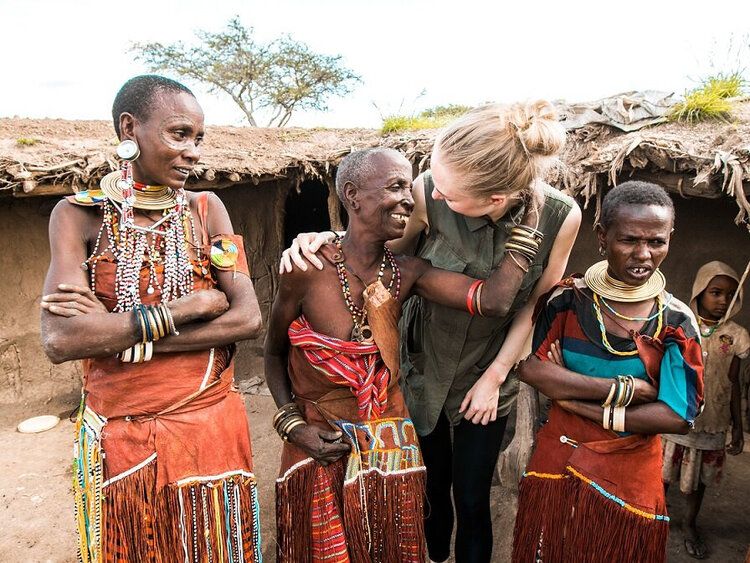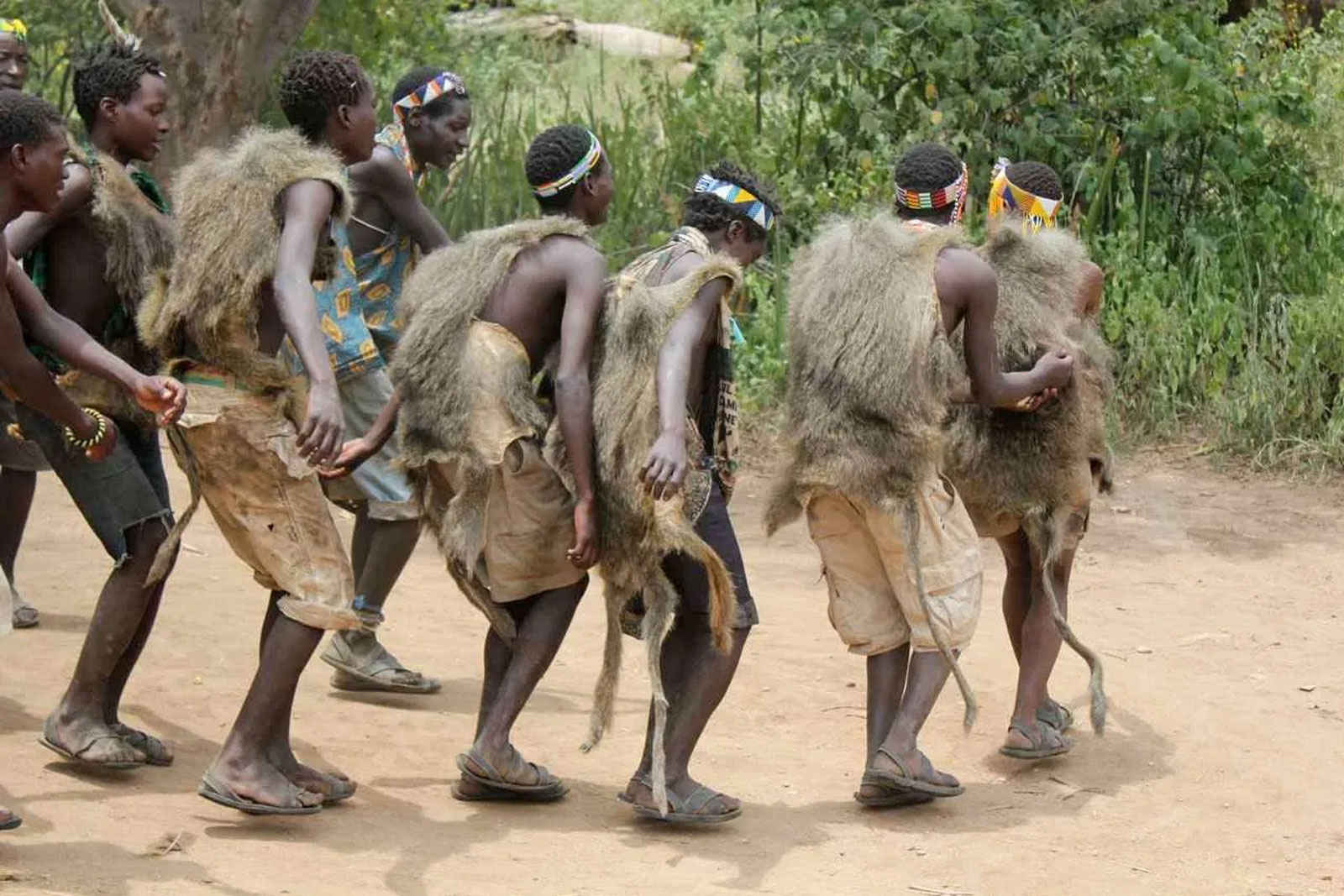- Home
- About
- Safari
- 4 Days Wilderness Tanzania Safari
- 5 Tanzania Adventure
- 6 Days Wildlife Safari
- 6 Days Big Cats Safari
- 7 Days Romantic Safari
- 7 Days Wildebeest Calving Season
- 9 Days Northern Circuit Route
- 10 Days Southern Circuit Safari
- 10 Days African Safari Tour and Cultural Tour
- 13 Days Southern Tanzania and Zanzibar Safari
- Trekking
- Destinations
- Contacts
Hadzabe and Datoga’s Experience
Overview
Lake Eyasi is an untouched and scenically beautiful area where you can get a real insight into the way of life of rural tribes like the Datoga and Hadzabe Bushmen.
Datoga
The Datoga are iron knife and spear makers who also happen to be farmers. The Datoga is a Nilotic tribe in northern Tanzania, near the Masai. They are, along with the Hadzabe, one of the country’s last truly primitive tribes. Although they recently embraced subsistence farming, they still keep cattle, much like the Masai. The Datoga’s dress code is one of its most intriguing features. They dress in collars and bracelets made of brass or beading.
The tattoos that surround the Datoga’s eyes are another distinguishing feature. Because the Datoga culture encourages aggression, they have not always lived peacefully with their neighbors, such as the Iraqis or Hadzabe. Despite their warrior reputation, the Datoga are welcoming to tourists. They can tell you a lot about their lives and cultural beliefs if you pay them a visit. What will you see if you go to Datoga? You’ll learn about their ways of life, such as how to make cattle fences, huts, traditional dresses, weapons, and milk a cow. You’ll also learn how to make traditional beers, foods, and herbal remedies for common ailments.
They live in harsh conditions in semi-arid regions with limited access to clean water. A polygamous household with wives ranked according to marriage order is ideal. The couple must marry outside of the clan.
Funerals are time-consuming affairs that can last for up to a year. A local council of elders wields considerable power. The elderly have the authority to levy fines and curses, but the primary form of social control is group pressure. On special occasions, men drink honey beer as a sacred beverage.

Hadzabe
The Hadza are Africa’s last hunter-gatherer people. Their language is thought to still produce clicks and pops unique to click languages, and they are comparable to click language speakers. This small African Bushmen tribe is thought to have been driven out of the Ngorongoro Crater and the Crater Highlands Woods by the more hostile Maasai and Iraqw (Mbulu), where they later established themselves in their current territory near Lake Eyasi. These African Bushmen can only survive by gathering fruit and berries and hunting. They never have cows or produce agricultural products.
They use bows and arrows to hunt wild animals and eat roots, honey, and wild fruits. Visit their natural habitat and learn about their culture firsthand. You can take part in their real-life activities, such as hunting and making fire. This is one of the most valuable and memorable safari experiences for many people. Men typically hunt and bring honey home to feed their families, whereas women and children collect fruits, berries, and roots to supplement their diet.
The men are particularly skilled hunters, and their daring and inventive hunting style is breathtaking. They cleverly lure and kill the game by using parts harvested from other animals. They are the only tribe allowed to hunt in the Serengeti because this is their only source of food. The Hadzabe live in caves near Lake Eyasi, and their isolation and small population size have allowed them to avoid the HIV epidemic and other diseases spread by intertribal marriages.
Their language is an intriguing aspect of Hadzabe culture. The Hadzabe language, which is thought to be related to the Bushmen of the Kalahari Desert, is a distinctive tongue of clicks similar to that of the famous Bushmen. Despite this, and despite their similar physical appearances, DNA testing has revealed no link between the two groups.


Summit Heroes provides the most affordable and customized travel experience available.
About Us
Get in touch
- Moshi, Kimanjaro, Tanzania
- +255716 588 188
- info@summitheroesexpeditions.com
Quick Link
